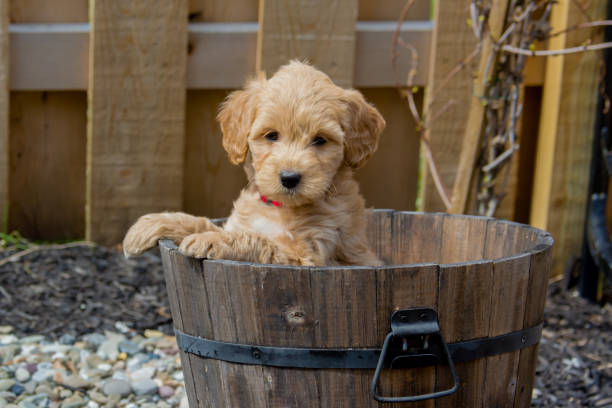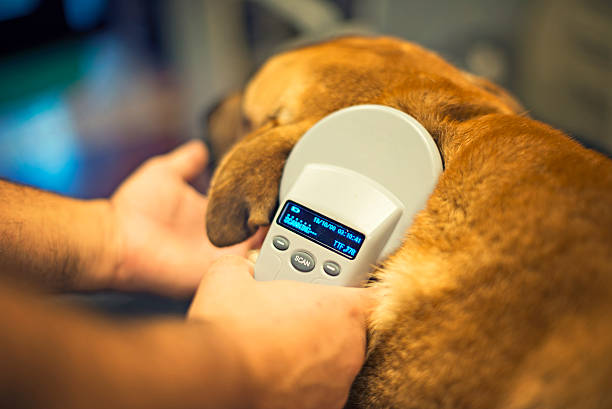The birthing event in dogs can take place unexpectedly, and accurately determining the precise moment it will occur is unfeasible.
The most important thing to do is make sure your dog is healthy before she goes into labour. However, even with a clean bill of health, if the mother has gone into labour, there are some things you should be aware of.
First off, make sure you take her to the vet as soon as possible (which means before she starts giving birth) so they can examine her and tell if everything is going well or not. If all looks good, stay home and wait for nature to run its course, but if something doesn’t look right, get on over to the vet ASAP!
Secondly, let’s talk about what happens once your dog starts giving birth.
Most dogs give birth to a litter of six puppies, and it usually takes about an hour for each pup to be born, but some can take longer or shorter depending on things like how big the litter is or if there are any problems in delivery.
After your dog gives birth, put them in a warm place where they can’t move around too much, so they don’t hurt themselves or the puppies. It’s also important not to disturb them while giving birth because it could stress both the mother and pup more than necessary.


You may be wondering how you are going to know when your dog is in labour.
First, she will start pacing back and forth or hide under a bed or desk. You will also notice her water breaking, which is very similar to how it looks during human birth. She will start breathing heavily and may look anxious.
After she starts giving birth, she shouldn’t have any more contractions, so if you see that happening, then contact your vet ASAP because there’s something wrong.
Momma dogs can be protective of their puppies, so you may notice her pacing around the area where the new pups are coming into the world.
She will usually lick them off to clean them after they’re born and then eat the placenta. This is nature’s way of urging her body to produce milk for the new pups.


Once she has finished giving birth, take her to see the vet ASAP to check on mom and all the little puppies. Make sure you bring any other dogs or pets in your house with you, too, because they may have been exposed to something serious.
Your dog will most likely need to go on a strict diet because she will be “eating for two” and will need all the energy and nutrients she can get.
How Long Will Labor Last for a Dog?
Labour can last anywhere from a while to hours.
If your dog’s contractions are not close enough together, it can cause them to have prolonged labour. If the pup is being delivered breech, the mother will be under more stress, prolonging her labour. Labour should last anywhere from hours to three days for dogs.


Is it Normal if My Dog Gives Birth to One Pup Instead of Six?
Different breeds of dogs vary in terms of the number of litters they reproduce per year, with some breeds generating up to four litters a year while others may not produce any litters at all during an entire lifetime. You’ll want to talk to your local veterinarian about what’s best for your dog and also take into account the medical history involving their reproductive organs before anaesthetizing them so that puppies can be removed via C-section, so you don’t have complications later on due to infection.


Is it Normal if My Dog is Bleeding a Lot After Giving Birth?
Yes – dogs often bleed after giving birth.
A first-time dog owner may worry that their dog is bleeding too much after giving birth, but the truth is that dogs commonly bleed for ½ hour to 1½ hours after giving birth. And whether or not your pup bleeds at all will depend on the size of the litter and where it’s positioned in her uterus. Bleeding can also happen if your pet tenses up during labour—something she will do to help push out her puppies!
Just watch for signs of excessive bleeding, such as bright red blood or extreme discomfort, and you should be fine.
If your dog is experiencing excessive bleeding, contact your vet immediately.
How Can I Tell if the Pups are Dead or Alive?
One way to tell if a pup is stillborn or alive is to try touching it. If you feel the pup’s heartbeat, it will be a sign that it’s alive. You can also check for a heartbeat by listening carefully to the chest area.
Also, if you place a cotton swab in the pup’s nose and it wiggles its nose or twitches its face, this will be a sign that it is alive.
If your dog doesn’t go into labour within 24 hours of her estrus cycle, contact your vet as soon as possible.
What Supplies Should I Have on Hand Before Labor?
A few things you can have on hand before labour:
- Disposable gloves
- Rubbing alcohol, mineral oil or olive oil for cleaning pup’s genitals
- Cotton swabs and cotton balls for cleaning mother and pups
- Towel and blanket to keep mother and pups warm postpartum
- A glass of water and a dish for first food (like boiled eggs) if your pup is nursing
- Puppy milk replacer (if this is your first time fostering a litter)


At What Point in Labor Do I Need to Take My Dog to the Vet?
As soon as you can! They need a fair amount of time to adjust, and if your vet approves, take them in for a short visit.
It would help if you let the vet examine your animal before you start going into full-time labour. Once they give the “all clear,” it’s safe for you to begin bringing in some hay or straw from outside so that when it is time to deliver, your pet will have a soft landing spot! Keep an eye on their behaviour — when they start panting from stress when they refuse food or act more clingy than usual; these are all signs that labour has begun, and it’s time to get moving before things get too serious.


How Long Birth Labor Last?
Typically, dogs are pregnant for 63 days. However, the majority of dogs will not go into production until around day 58. Labour can last anywhere from 7 to 40 hours. But if it lasts more than 24 hours, you need to call your vet right away.
What is the Best Way to Keep My Dog Safe When in Labor?
On their side, in a nest of hay or straw. Keep them warm and comfortable and make sure there’s something for them to drink (but don’t let them drink too much, or they’ll end up with diarrhoea). You can also place damp washcloths on their belly until the puppies are born — they will often chew the washcloth clean, which is good for them.


What’s Happening During My Dog’s Labor?
It’s important to know what you’re looking at when your animal goes into heavy labour…
The appearance of a Bloody Show: This means that there are small bits of blood-streaked discharge. It’s important to note that the discharge shouldn’t be a continuous flow but rather an occasional release of blood. If there is a steady bloody discharge or it becomes very red and bright in colour – call your vet immediately — this means that the placenta has detached and needs immediate attention.
False Labor: When you notice constant restless behaviour, over-panting, very red vaginal discharge – when you see these signs, it may not be time for them to give birth yet! This can last several hours or up to a day. Make sure your dog is comfortable with soft padding around her and let them do their thing.
Real Labor: When your dog’s contractions are regularly coming, they’ll be panting and pacing. You should see a dark reddish or bluish discharge from their vagina, and bloody mucus will string out about every 10 minutes. It will look jelly-like and stretch between 4 to 8 inches long. If it is clumped up in strings, this means the cervix is closed, and you should move on to the next stage.
Delivery of Puppies: When you see that your dog’s cervix has begun to open up, their contractions will be stronger, and you’ll begin seeing puppies. It is important to note that not all of them come out together – many times, they will come out one or two at a time. After the first puppy is born, many other ones will follow quickly.
Placenta Delivery: The placenta comes out about 15 minutes after the puppies are born. It will be large and dark red in colour. It would help make sure that all placentas are delivered within 30 minutes of the first puppy being born.
Mother’s Defense: If the mother dog senses that something is wrong, she may try to defend her babies by snapping or growling at you. Do not be alarmed! She wants to make sure that they are safe and that nothing will harm them. You can take this opportunity to check on the puppies to see if they are alright.
Mother’s Cleaning: Once the placentas have been delivered, the mother can immediately begin cleaning – licking off any afterbirth or fluids that are still on the puppies. This is normal behaviour, and you should let her do it. When she has finished cleaning them, she will likely eat the placentas.
Remember to keep a close eye on your dog during labour – but don’t over-help unless necessary because you risk breaking the amniotic sac, which can cause complications for both mother and puppies. And it’s important to note that dogs will give birth just fine without human interference in most cases! However, if they are in distress or need help, you can call your vet or bring them into the veterinary hospital for proper care.


Conclusion
We know you want to help your animal during labour, but it is important not to over-help or get in the way. If they are comfortable and don’t need anything from you, just let them do their thing! The best thing that can happen for both mother and puppies is if they go into labour without any human interference – this will allow all of them to come out healthy. Make sure that there’s plenty of hay or straw available for her nest because she’ll be spending a lot of time there while waiting on the contractions.


